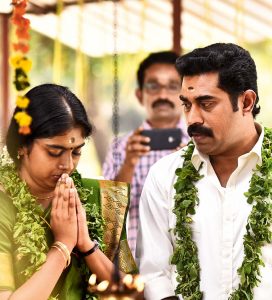Wrote this back in December 2020 for 3 Quarks Daily, to mark two decades since I moved from India to the United States. This piece is about my grad school years at Arizona State University.
—
 In the summer of 2000, after completing my bachelor’s degree in engineering, I had to decide where to go next. I could either take up a job offer at a motorcycle manufacturing plant in south India, or I could, like many of my college friends, head to a university in the United States. Most of my friends had assistantships and tuition waivers. I had been admitted to a couple of state universities but did not have any financial support. Out of a feeling that if I stayed back in India, I’d be ‘left behind’ – whatever that meant: it was only a trick of the mind, left unexamined – I took a risk, and decided to try graduate school at Arizona State University. I hoped that funding would work out somehow.
In the summer of 2000, after completing my bachelor’s degree in engineering, I had to decide where to go next. I could either take up a job offer at a motorcycle manufacturing plant in south India, or I could, like many of my college friends, head to a university in the United States. Most of my friends had assistantships and tuition waivers. I had been admitted to a couple of state universities but did not have any financial support. Out of a feeling that if I stayed back in India, I’d be ‘left behind’ – whatever that meant: it was only a trick of the mind, left unexamined – I took a risk, and decided to try graduate school at Arizona State University. I hoped that funding would work out somehow.
So in August 2000, I found myself traveling across continents to this powerful country that I knew little about. It was my first ever time outside India and my first ever flight. From Chennai, I flew to Kuala Lumpur, then, after an eight-hour layover which I didn’t mind at all, to Los Angeles and finally, after the worry of a missed connection, to Phoenix, Arizona. The gleaming, modern airports, the meals and the movies, the turbulence and the clouds: it was all very exciting, a glimpse of an elite world that had once seemed inaccessible.
At the Phoenix airport, someone from the Indian Students Association at ASU came to pick me up. After what seemed like a recklessly fast drive – in fact it was normal: it’s just that I’d never experienced a 70-miles-an-hour ride on a highway before – he dropped me off at an apartment shared by three Indian grad students. One of them, my host until I found an apartment, wore a veshti, the wraparound skirt common in south India. He spoke Tamil fluently; he spoke it so well that I could well have been in my home state. I had a nagging suspicion at the time that people might change as soon as they landed in a foreign country – that they might change their attire, even forget their mother tongue. It was reassuring to know that wasn’t true. At the heart of such doubts, I see now, was a fear that I would quickly surrender my Indianness.
I slept well on the couch that first night, and when I woke up next morning, everyone was gone. There was a massive, just-opened bag of potato chips on the dining table. What better way to experience America on your first morning than digging into a big bag of Lays that grad students, making good use of buy-one-get-one-free, always had in good supply? I had never seen a bag that size! I ate some with guilt, consoling myself that nobody would notice. Not that anyone cared, of course. It was only the first of many ‘big’ things I encountered in those early days: a massive warehouse – a Costco store – where you could pick out things in bulk at cheap prices; gleaming red tomatoes as large as cricket balls (but strangely tasteless); monster trucks with 53-foot long trailers hurtling down the highways and interstates, looming behind small cars until they yielded.
Continue reading “Early Years in Arizona”
 I’d tried getting into The Diversity of Life twice before — 2018 or 2019 I think — but could not persevere beyond a few dozen pages. I wasn’t ready then for the kind of dense biology content that E.O.Wilson (the famous Harvard naturalist, known for his research on ants) was trying to communicate to lay audiences. In August last year — the beginning of my two semester teaching break — I picked up the book again. This time I sailed comfortably through. I read it over many months, savoring the details. Interesting how content that is so bumpy at one time can feel so seamless at another. (There was also an odd coincidence: I was about three quarters through the book when I heard of Wilson’s passing at age 92.)
I’d tried getting into The Diversity of Life twice before — 2018 or 2019 I think — but could not persevere beyond a few dozen pages. I wasn’t ready then for the kind of dense biology content that E.O.Wilson (the famous Harvard naturalist, known for his research on ants) was trying to communicate to lay audiences. In August last year — the beginning of my two semester teaching break — I picked up the book again. This time I sailed comfortably through. I read it over many months, savoring the details. Interesting how content that is so bumpy at one time can feel so seamless at another. (There was also an odd coincidence: I was about three quarters through the book when I heard of Wilson’s passing at age 92.)




